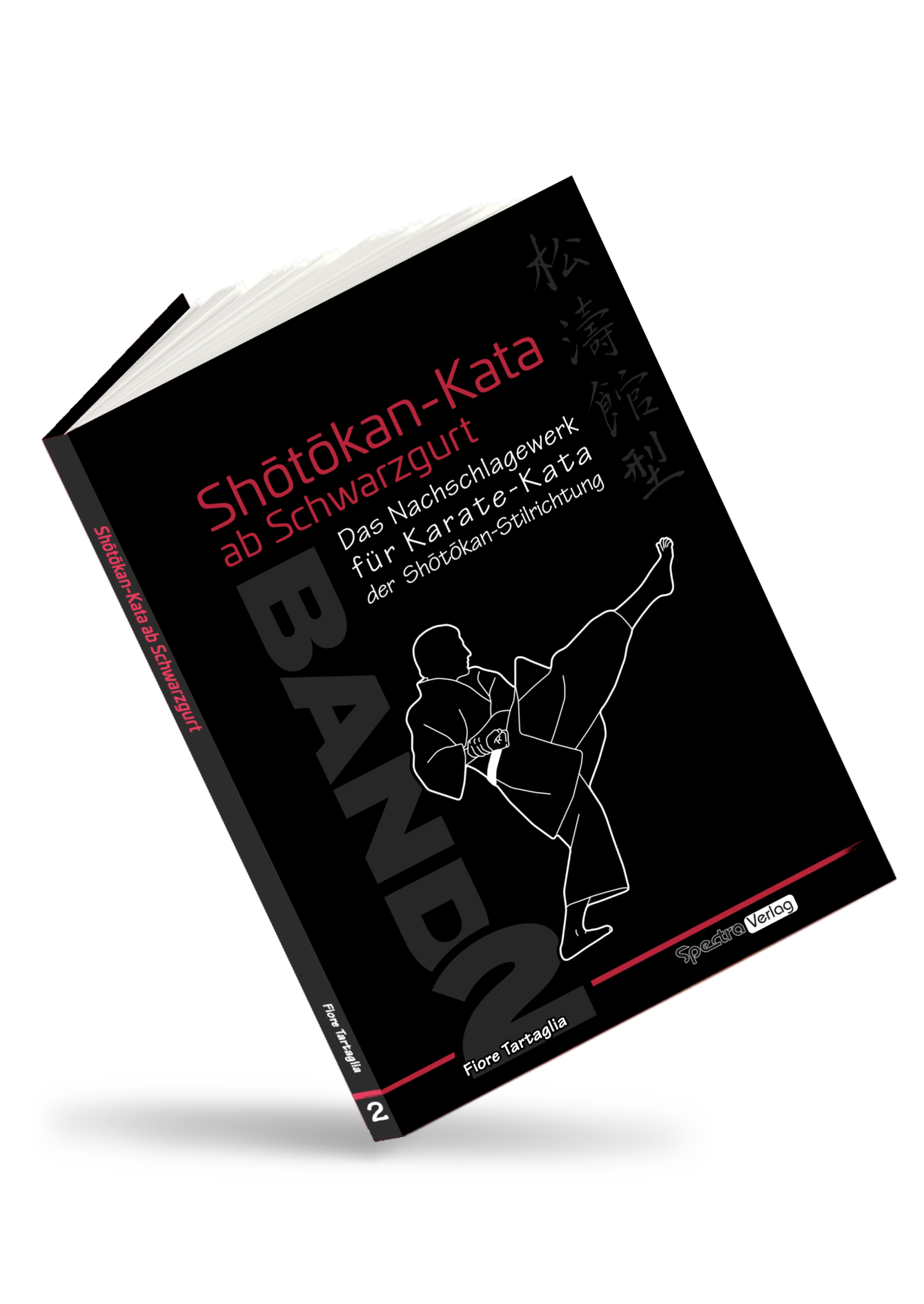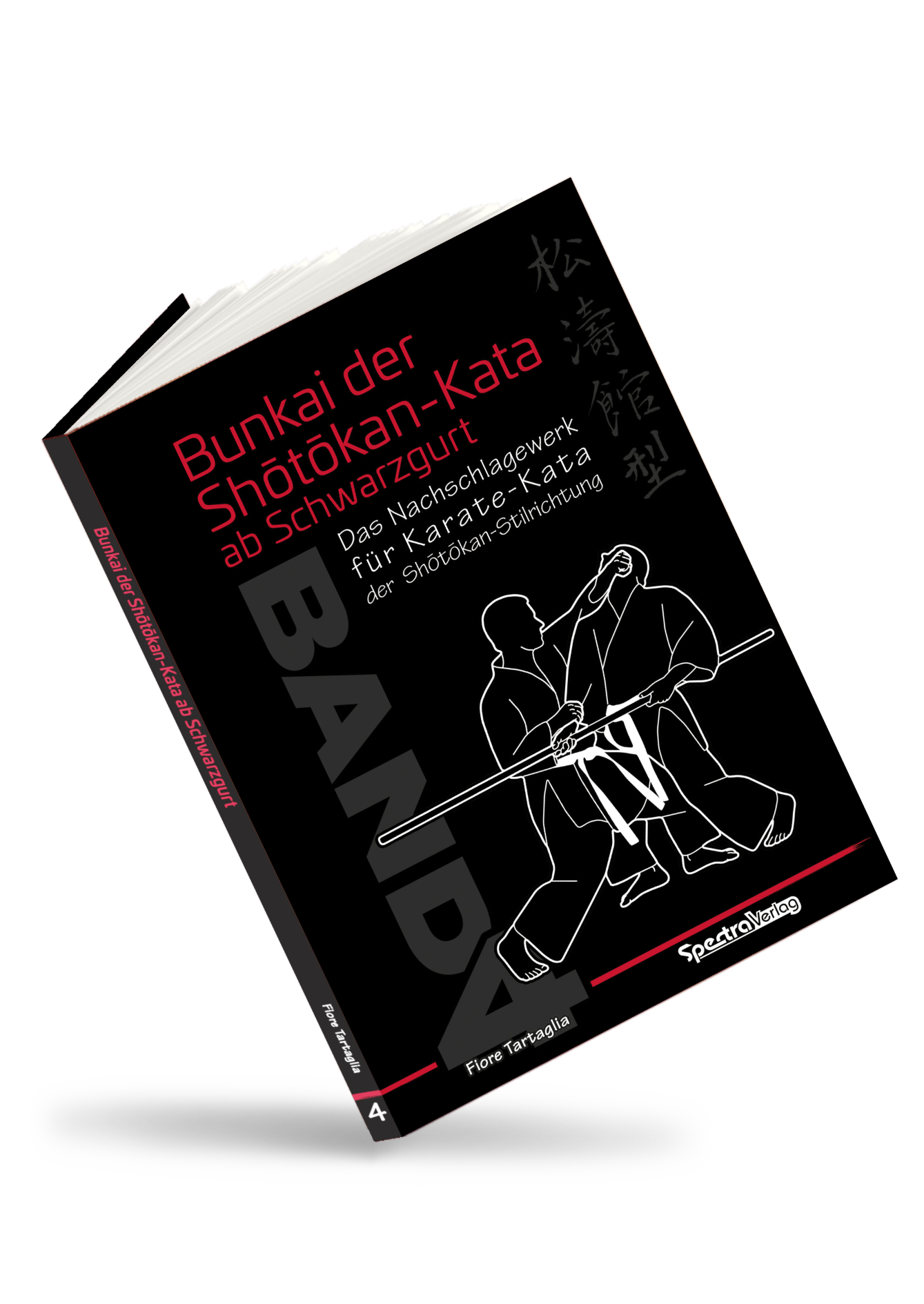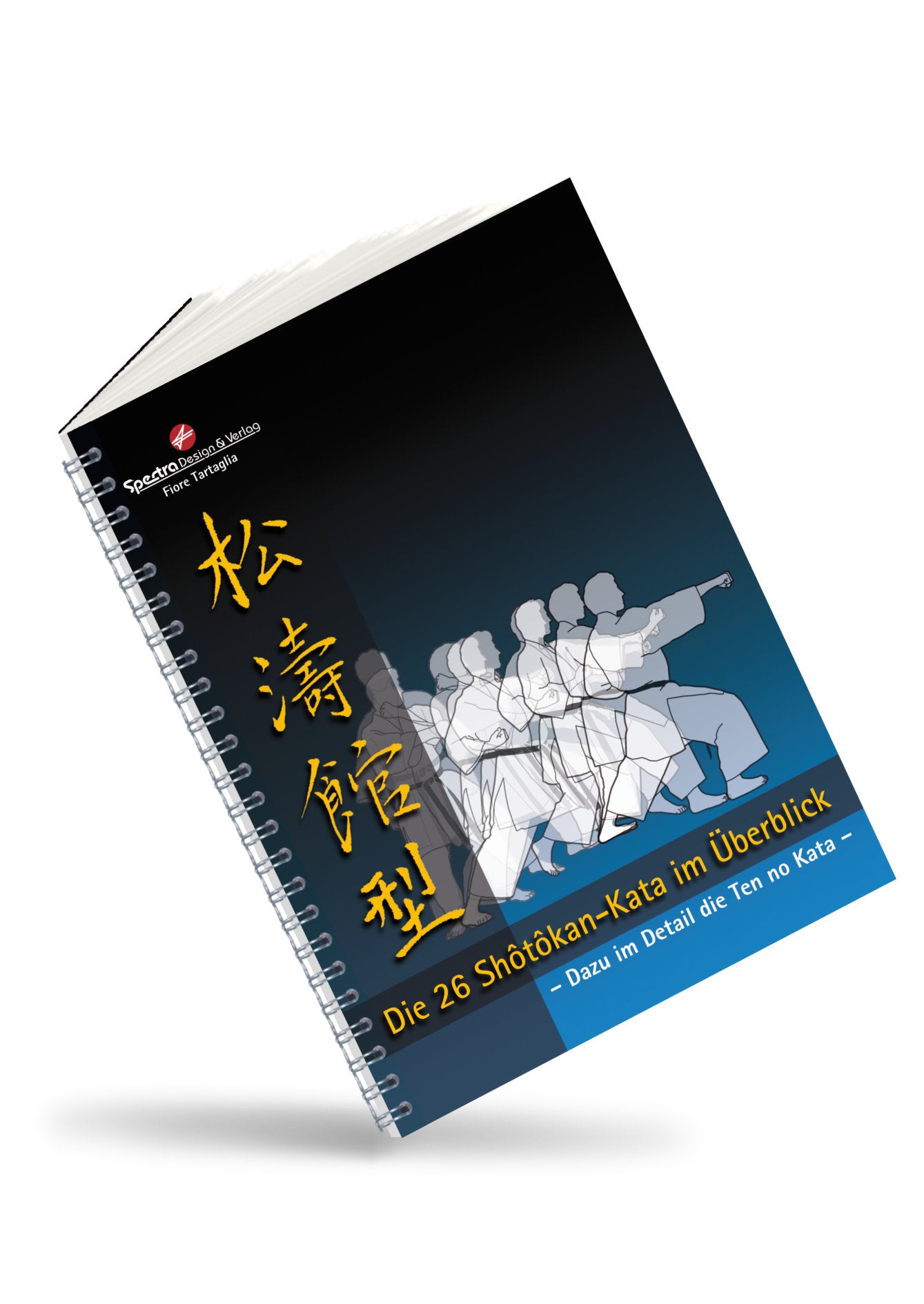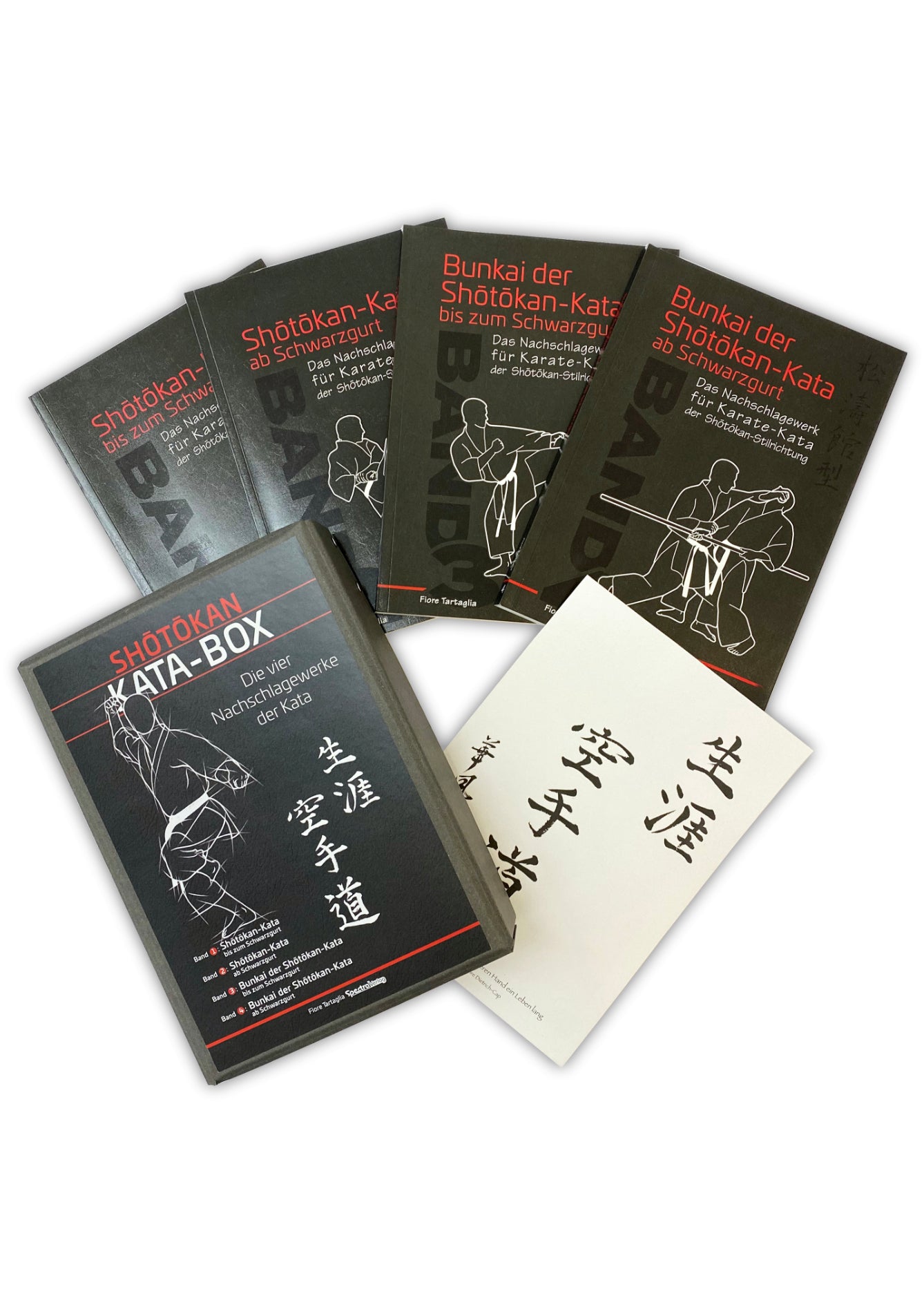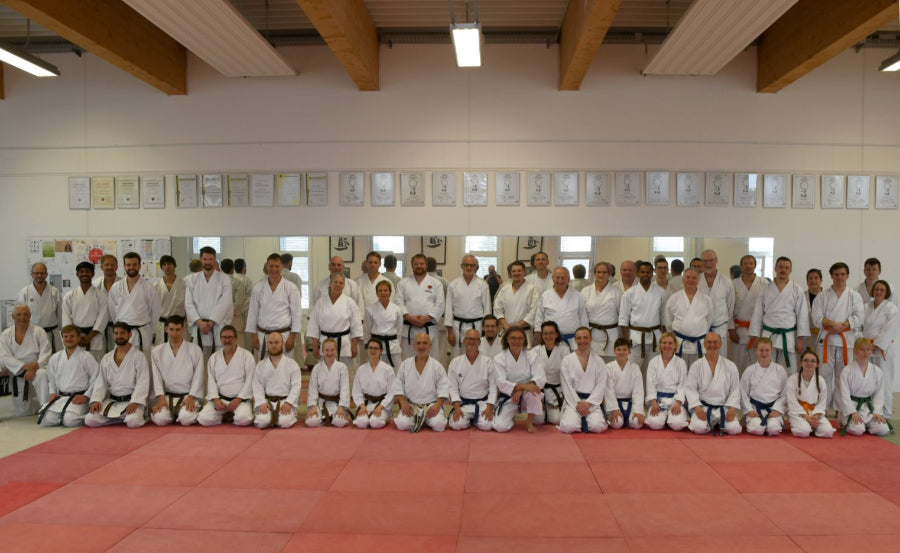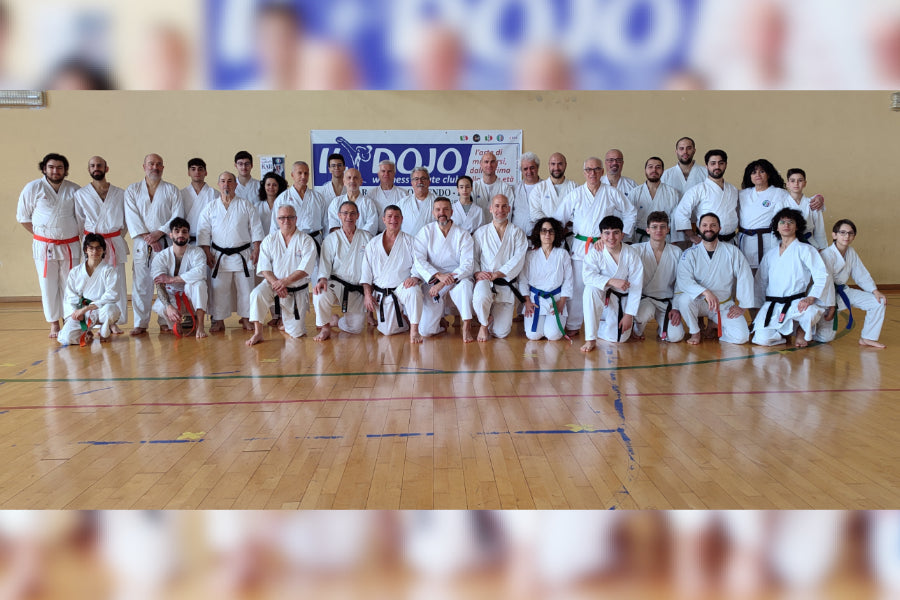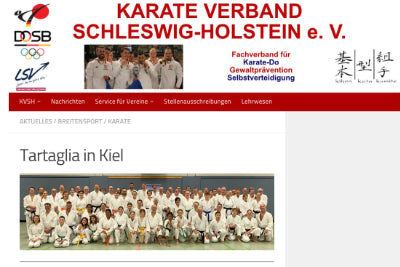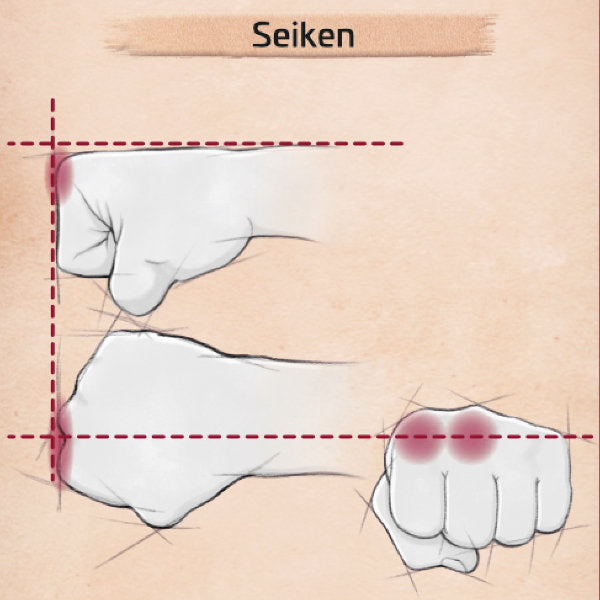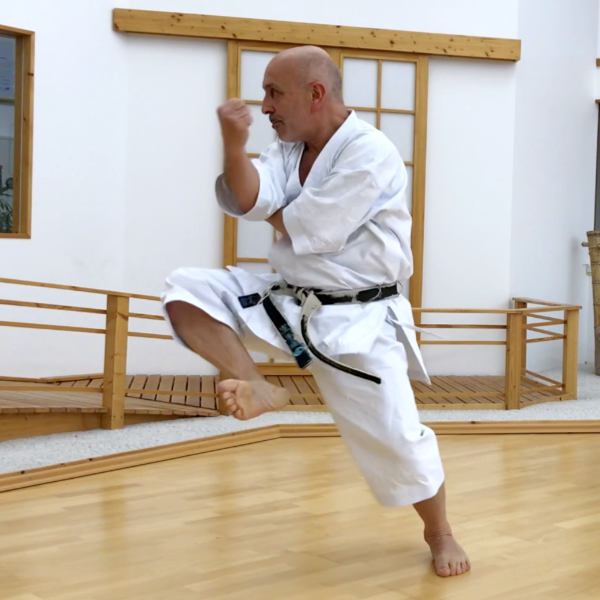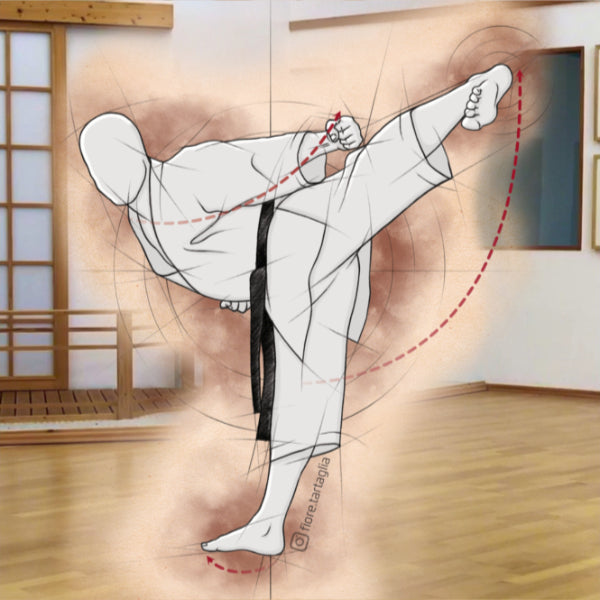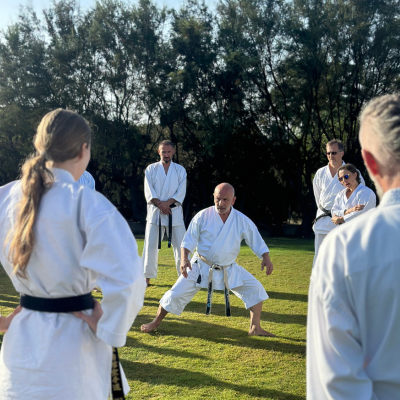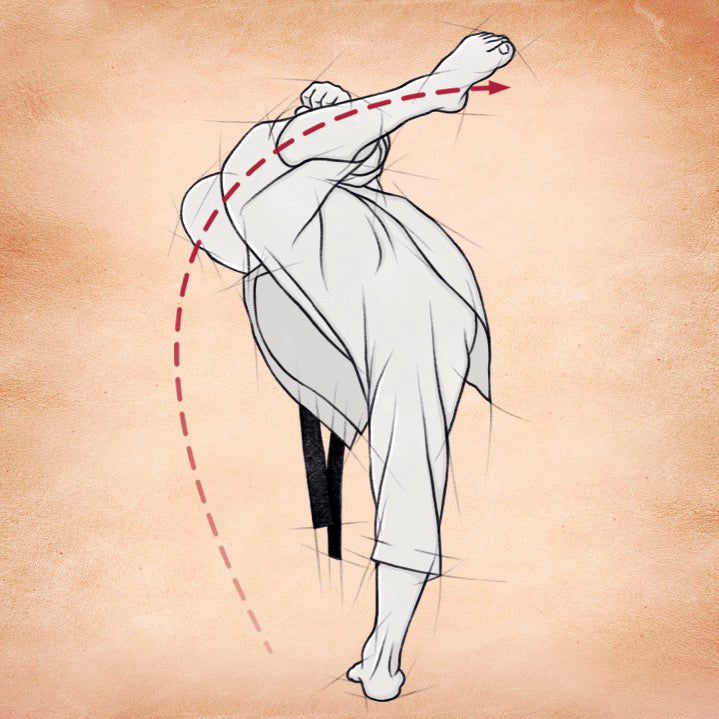MEIKYŌ – BRIGHT MIRROR
The original form of Meikyō was called "Rōhai." This original form is still practiced today in the Wadō-ryū style, and in Shōrin-ryū and Shitō-ryū, a series of three kata is even practiced.
The name "Bright Mirror" likely comes from the large circular movement at the beginning of the kata. This movement appears twice more later and is intended to symbolize cleaning a mirror or smoothing the surface of water so that one can see oneself reflected in it.
As an advanced kata, Meikyō draws on various basic techniques already found in the Heian kata. This emphasizes that one never stops learning and should not neglect the techniques one learned initially.
Meikyō contains only one kiai; rarely is another kiai placed on top of the mikazuki geri. Meikyō and wankan are the only kata in the Shotōkan that do not require two kiai.
The technique that characterizes Meikyō is the triangle jump, a very demanding one. A Jōdan attack is blocked, one jumps slightly sideways to attack the opponent with a jumping elbow strike, and then lands behind them at a safe distance. This technique requires not only good jumping power but also body control to execute the elbow strike with kime while keeping the legs bent. Only an exact landing allows the karateka to finish on the spot where they began.
The three combinations at the beginning of the kata show three defensive techniques: Gedan barai, Uchi uke, and Age uke. The following combination is very common and just as correct: Gedan barai, Gedan barai, Uchi uke. The version shown here is more instructive because it practices three different defensive techniques. For this reason, the variant shown here was chosen for the graphic representation.
The Bo awase uke techniques can also be performed differently than shown here: the right arm, whose hand is holding the attacking stick, first goes in front of the own head before being moved downwards in a circular motion.
The static nature of Meikyō exudes calm, similar to Sōchin. Together, the many basic techniques and rhythm allow the action to be performed with composure.
Duration: approximately 60 seconds

